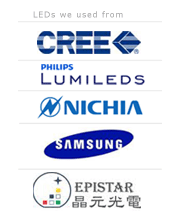News
Search
Popular search



Smart bulbs are a very interesting smart home appliance and often the first products families introduce into the household, according to a report by Sinai. Manufacturers design concept is also easy to understand: Use the smartphone to control the light switch, and even swap colors, or audio system and other interactive products.
All these functions completely rely on smartphone and tablet Apps. In other words, you need to use apps on electronic devices to turn on the lights, which brings a new series of problems: What if you forgot your smartphone? You will need to find it before any lighting controls can be carried out, or recharging your phone first if it runs out of power.
Maybe manufacturers have started to realize using these devices is not too “smart,” so Philips and Belkin have launched wireless bulb controllers to solve this issue. Which brings another issue of more controllers in the house. Additionally, hundreds of RMB is spent to purchase these products. Keep in mind, the smart bulbs are already pretty expensive. All these above factors have prevented smart bulbs from quickly penetrating into households. As for the solution? An independent voice control might be a better option, but due to costs and technology involved, these products are few and mainly conceptual prototypes.
Nearly all IOT products are incompatible
Since smart home and IOT concept is still in the initial phase, there has been the lack of a uniform platform. Each manufacturer has been managing on their own, and only providing compatible systems between their own products, or supporting only one particular compatibility standard. This places many obstacles for users. For example, if you want to “wirelessly play slow music, and allow smart bulbs to flash colorful lights” then you better make sure they support IFTTT standards, or the smart bulb App provides stereo support.
In the future industry heavy weights Apple Homekit and Google Android Home platforms might be able to improve this segmented situation and offer a more comprehensive interactive platform. This enables different devices to collaborate better, but will still require long development phase. So if you are eager to enter the smart home field, see if the products are future-proofed to support major smart home platforms in the near future.
Although, people’s pursuit for “intelligent products” is never ending, the current smart home products are far from perfection. Even though we cannot expect AI, or smart home devices with human-like cognitive and learning abilities will appear anytime soon, manufacturers should work towards offering better control, functionality, and Internet connective mechanisms with higher safety standards. In other words, smart home products should not be going after hollow, and gimmicky features. Only by gradually improving the basic user experience can the product be designed with user experience in mind to truly generate a “smart experience.”



